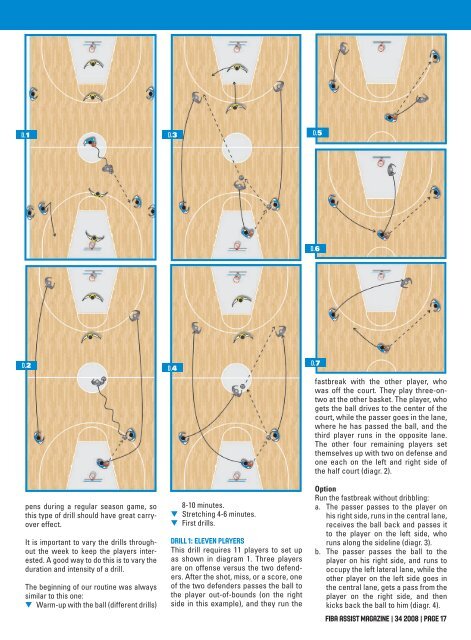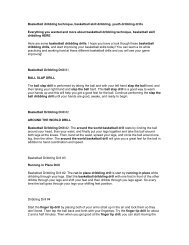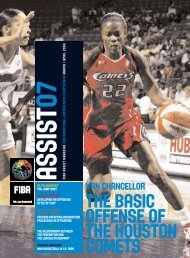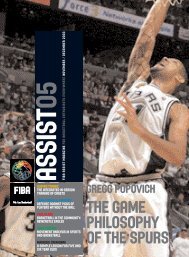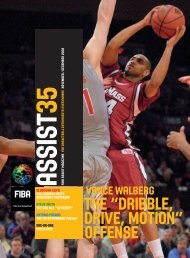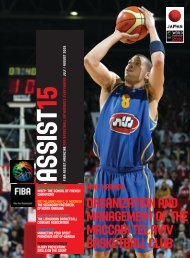“SLICE” AND “POINT” SETS - FIBA.com
“SLICE” AND “POINT” SETS - FIBA.com
“SLICE” AND “POINT” SETS - FIBA.com
Create successful ePaper yourself
Turn your PDF publications into a flip-book with our unique Google optimized e-Paper software.
D.1<br />
D.2<br />
pens during a regular season game, so<br />
this type of drill should have great carryover<br />
effect.<br />
It is important to vary the drills throughout<br />
the week to keep the players interested.<br />
A good way to do this is to vary the<br />
duration and intensity of a drill.<br />
The beginning of our routine was always<br />
similar to this one:<br />
▼ Warm-up with the ball (different drills)<br />
D.3<br />
D.4<br />
8-10 minutes.<br />
▼ Stretching 4-6 minutes.<br />
▼ First drills.<br />
DRILL 1: ELEVEN PLAYERS<br />
This drill requires 11 players to set up<br />
as shown in diagram 1. Three players<br />
are on offense versus the two defenders.<br />
After the shot, miss, or a score, one<br />
of the two defenders passes the ball to<br />
the player out-of-bounds (on the right<br />
side in this example), and they run the<br />
D.5<br />
D.6<br />
D.7<br />
fastbreak with the other player, who<br />
was off the court. They play three-on-<br />
two at the other basket. The player, who<br />
gets the ball drives to the center of the<br />
court, while the passer goes in the lane,<br />
where he has passed the ball, and the<br />
third player runs in the opposite lane.<br />
The other four remaining players set<br />
themselves up with two on defense and<br />
one each on the left and right side of<br />
the half court (diagr. 2).<br />
Option<br />
Run the fastbreak without dribbling:<br />
a. The passer passes to the player on<br />
his right side, runs in the central lane,<br />
receives the ball back and passes it<br />
to the player on the left side, who<br />
runs along the sideline (diagr. 3).<br />
b. The passer passes the ball to the<br />
player on his right side, and runs to<br />
occupy the left lateral lane, while the<br />
other player on the left side goes in<br />
the central lane, gets a pass from the<br />
player on the right side, and then<br />
kicks back the ball to him (diagr. 4).<br />
Fiba Assist Magazine | 34 2008 | Page 17


